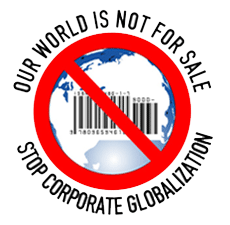| Sunday, February 8, 2004 * Last updated 11:57 a.m. PT U.S., Australia sign free-trade pact
By MATTHEW DALY
ASSOCIATED PRESS WRITE WASHINGTON -- The United States and Australia concluded a free-trade agreement Sunday that officials said will eliminate duties from more than 99 percent of American manufacturing exports to Australia. U.S. Trade Representative Robert Zoellick described the deal, which requires congressional approval, as "the most significant immediate cut in industrial tariffs ever achieved in a U.S. free-trade agreement." Australia, the United States' 13th largest export market, buys more goods from the United States than from any other country. The U.S. economy has a $9 billion surplus in two-way trade that totaled about $28 billion in 2002. After almost a year's negotiation, the deal was struck Saturday after a telephone call between President Bush and Australia's prime minister, John Howard. "The president talked to the prime minister about how he thought it was good deal for both countries," White House spokeswoman Claire Buchan said. "The two talked about the importance of the free-trade agreement. They also talked about other issues, including the war on terror." Zoellick said the negotiations were difficult, but the final agreement reflects the special relationship the United States has with Australia. "We consider Australia an extremely strong ally. Clearly there's a security basis" to that, Zoellick said. "But we also want to strengthen the economic relationship. That's what this free-trade agreement is about." A statement from Zoellick's office said the agreement could increase American manufacturing exports to Australia by $2 billion a year. Some of those are aircraft, autos and auto parts, machinery, computers, chemicals and wood and paper products. Australian manufacturing exports to the United States also will grow, largely in pharmaceuticals, light commercial vehicles and auto parts, according to the statement. Many agricultural products also are covered, although quotas and tariffs are unchanged on sugar, a major Australian export. American sugar producers had lobbied hard against opening U.S. markets to more Australian sugar. Australian Trade Minister Mark Vaile defended the exclusion of sugar, saying the overall deal was worthwhile even without it. The United States refused to go along with Australian efforts to expand sugar exports to the United States. "The agreement delivers real and tangible and bankable results for both
countries," Vaile said. The agreement should lead to small increase in exports of beef by both countries, the U.S. statement said. Quotas will remain as they are, but the agreement will phase out tariffs of beef above the quotas. "All U.S. agricultural exports to Australia, totaling more than $400 million, will receive immediate duty-free access," the statement said. It said the deal "is sensitive to concerns that have been raised" by farmers, cattlemen and members of Congress from farm states. There will be no change in U.S. tariffs for dairy imports above the quota. Initial increases in imports from Australia will amount to about 0.17 percent of annual U.S. dairy production. Australia exports about 2 percent of U.S. dairy imports. Vaile called the deal historic and said it would create "enormous opportunities to all Australian companies interested in profiting in the world's largest and most dynamic economy," the $10 trillion U.S. economy. Asked by an Australian reporter why he had "blinked" on sugar, Vaile said he and other negotiators pushed as hard as they could but realized the U.S. would not budge. "You have to look at the overall balance," he said. About 97 percent of Australian manufacturing exports totaling nearly $6 billion a year, would become duty-free once the agreement takes place, Vaile said. The first U.S. free-trade agreement with a developed country was with Canada in 1988, five years before the 1993 North American Free Trade Agreement that linked the United States and Canada with Mexico. Other countries linked to the United States by free-trade pacts are Israel, Jordan, Chile and Singapore. The Central American Free-Trade Area will link the United States with Guatemala, El Salvador, Honduras, Nicaragua and Costa Rica if the pact is approved by Congress. Chris Slevin
Press Secretary
Public Citizen's Global Trade Watch
215 Pennsylvania Ave. SE
Washington, DC 20003
202-454-5140
www.citizen.org/trade
| 


